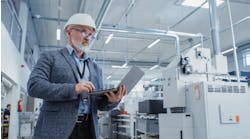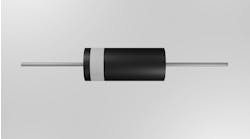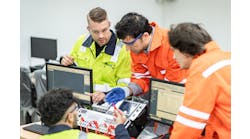Artificial intelligence tools will give engineers more time to tackle higher level projects
Many are experimenting with generative AI tools for back-end development, code optimization and as an added feature on machines, but AI is not abundant in industry, just yet. “While the potential of AI, particularly large language models, is significant; practical and deployable solutions for process automation and equipment integration are still emerging,” says Pradeep Paul, director of manufacturing intelligence at E Tech Group. And AI doesn’t belong where regular machine learning and data analytics will get the job done.
AI-generated code should also be used responsibly, says Chris Gibson, director of emerging technology growth at A&E Engineering, a system integrator and CSIA member. “Generative AI-generated code should always be treated as a suggestion and reviewed by experienced professionals before being implemented in machine control or monitoring systems,” he adds.
Get your subscription to Control Design’s daily newsletter.
In the future, AI may change, perhaps revolutionize, machine design, and more intelligent machines could eventually become autonomous systems. “AI-driven design tools will allow for greater customization and adaptability, leading to machines that can self-optimize and evolve based on operational data. The integration of AI into machine design will benefit all industries by reducing costs, improving product quality, and shortening time-to-market, ultimately driving innovation and competitiveness,” Gibson says.
With AI assistance to write and optimize code, this allows engineers to focus on higher-level design and problem-solving and less time on repetitive coding and debugging, Paul says.
Generative AI tools will change what engineers learn and how they program
E Tech Group has seen other changes in its engineering staff, where those managing three or four projects used to be “stressed out,” Paul says. Generative AI has made engineers more productive, so they’re less pressured by the same amount of work, and it has also lowered the programming knowledge and experience level required for a new engineer. The staff used to focus more on core competencies, such as someone with computer science expertise vs. chemical engineering expertise. “That’s getting blended out. It’s becoming more even,” Paul says. “You don’t have to have as high a programming knowledge, so our hiring practices have also changed in that way.”
With all this added time from their AI assistants, E Tech Group engineers do have more time to focus on higher-level projects, such as an automated system to help create tags. Engineers there are trying to build a system to make the time spent on creating tags a little easier. For example, a plant could have 500 tags that all have to be built out in the supervisory control and data acquisition (SCADA) system.
“We’d like to use tools to do it very quickly. Just put it in a spreadsheet and then import it, and it’s built out for us. It creates these tags in the right formatting and configuration,” Paul says. With many different systems and formatting, they have also been using generative AI to help build the tool. It will eliminate the manual process of converting spreadsheets into the tags and coding them one by one, and the new software application will automatically process tags and code with minimal input. What the company might have allocated as 24 hours of engineering time for tag generation could be reduced to four hours with the help of this new system, powered by generative AI and possible because of the time-saving nature of these AI tools.
This is the world where we all have capable and ever more competent AI assistants. Machine builders and system integrators are starting to explore the benefits of this new world, and it will have wide implications for machine development, deployment and operation.





